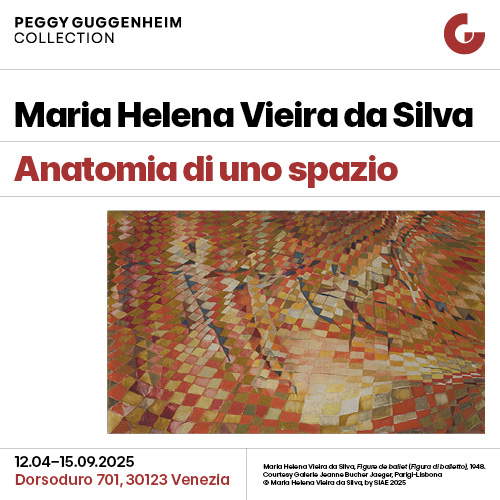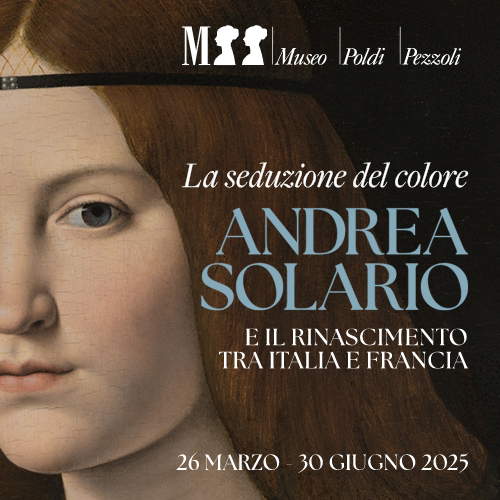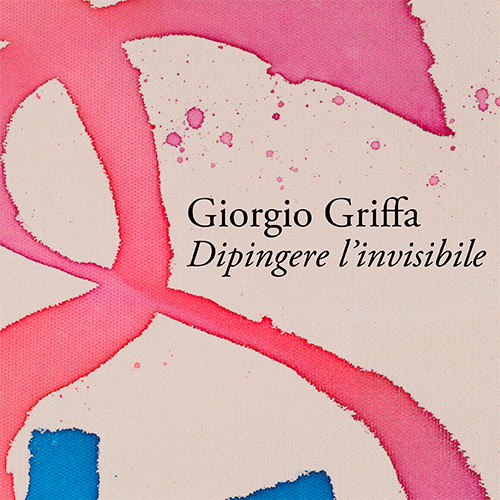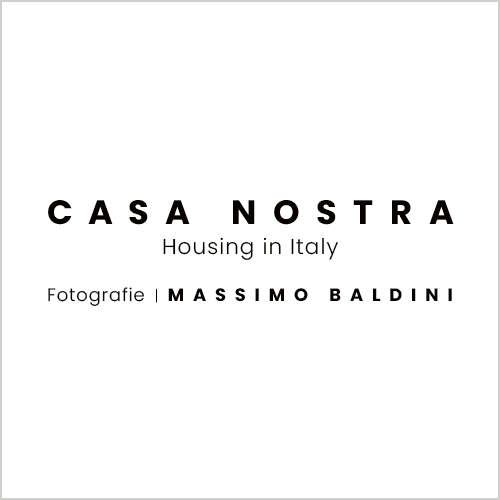The image of power. The portrait of Eleanor of Toledo in Pisa.
The most famous image of Eleanor of Toledo, born Leonor Álvarez de Toledo y Osorio, wife of Cosimo I de’ Medici and duchess consort of Tuscany, is surely the one painted by Bronzino and now preserved in the Uffizi: the Portrait of Eleonora di Toledo with her son Giovanni de’ Medici is , after all, one of the masterpieces of 16th-century portraiture, one of the most famous portraits in history, an eloquent image of Medici power and a testimony to the elegance of the Florentine court. However, it is not the only portrait of the duchess: in Pisa, the Museo Nazionale di Palazzo Reale preserves another famous portrait of Eleonora, who is portrayed, together with her son Francesco, heir to the duchy of Tuscany, again by Bronzino, here assisted by his workshop. What was the significance of these images? They were, essentially, state portraits, official portraits who held an important political role in ducal Florence in the aftermath of the fall of the Florentine Republic on August 12, 1530. In this historical context, explained scholar Philippe Costamagna, what had been the very function of the public work, and of the portrait in particular, was “disrupted: allegorical portrayals of the new head of the nation were meant to legitimize its seizure of power.” Portraits of the first duke, that is, Alessandro de’ Medici, such as the one painted by Giorgio Vasari in 1534, in which the young ruler is depicted in armor to emphasize his role as defender of the homeland, and along with numerous elements that were to become symbols of his qualities and of the Medici rule over Tuscany, are to be read in this sense. From allegorical portraiture, linked to the need for legitimization of the new Medici power, we then moved in the space of a few years to a more “institutional,” if one can say so, state portraiture: the need was no longer to “legitimize the duke’s rise to power through an allegorical portrait,” Costamagna explains, “but rather to convey the image of a reigning prince.” It is in this second sphere that Eleanor’s portraits fall.
The turning point is to be found in the early 1540s, when Bronzino waited to produce the first portrait of Eleanor of Toledo, destined for the residence at Poggio a Caiano, and today identified as the painting that is in the Národní Galerie in Prague, dating from 1543. It was, however, not an official portrait, but an image intended for private visibility, at the duke’s residence: nonetheless, this portrait, noticeably smaller than better-known ones such as the Uffizi portrait or the Pisa portrait, was the first model for the duchess’s image. Shortly thereafter, Bronzino would finalize the official iconography of the reigning couple, presenting the duke with the two “prototypes” of Cosimo and Eleonora’s portraiture, namely the Portrait of Cosimo I in Armor now in the National Gallery of South Wales in Sydney, and the very famous portrait of Eleonora with her son Giovanni preserved in the Uffizi. Having fixed the official iconography, the replicas (autograph, executed by the workshop or by other artists) would have decorated ducal residences, Tuscan government offices, or been sent to Europe as diplomatic gifts. Thus, there are a great number of replicas of the duke, while the number of replicas of the portrait of Eleanor is smaller, but the portrait of Pisa plays an even different role in this context.
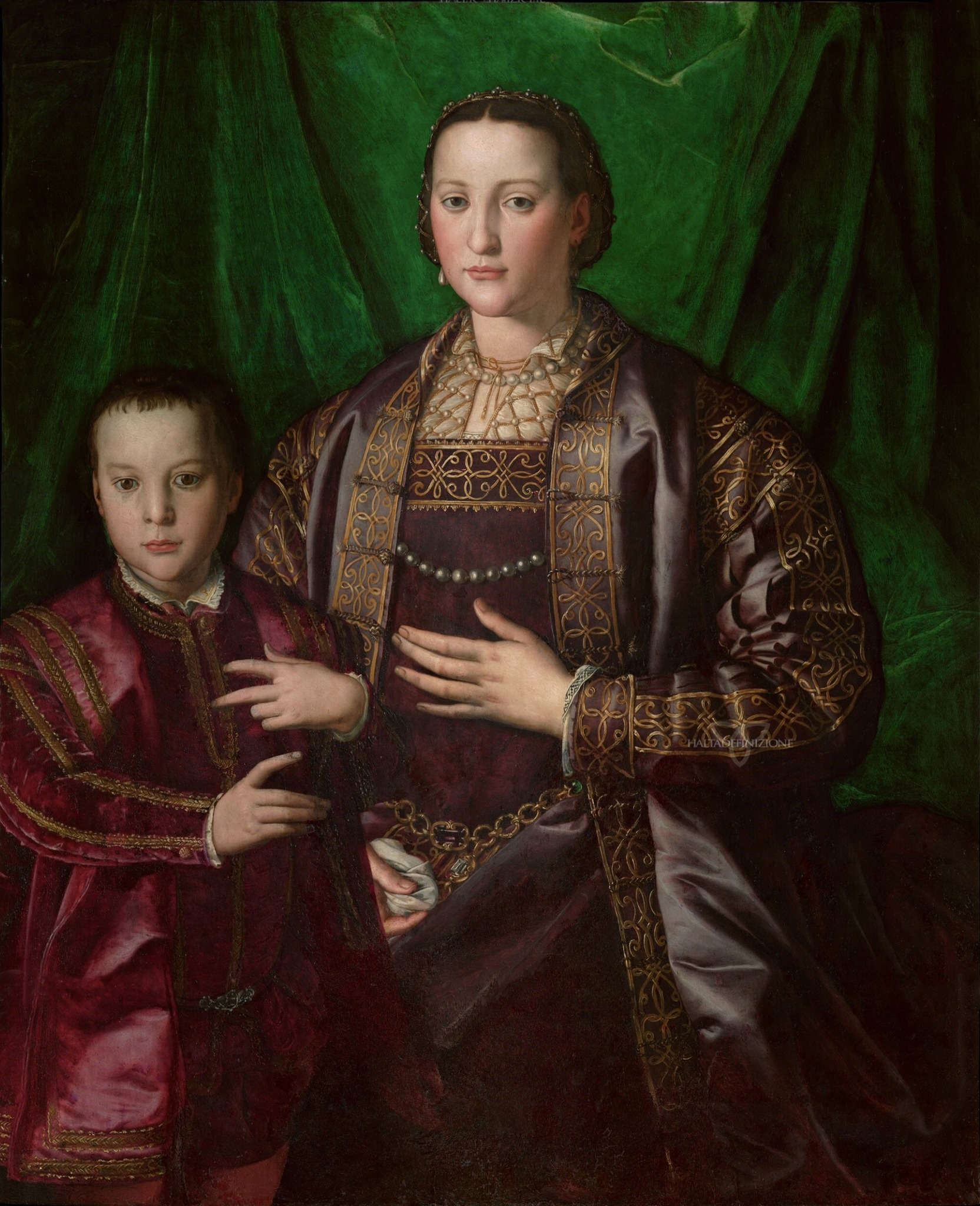
In January 1550, in fact, Bronzino was working on the prototype of a new official portrait, in which the duchess would be depicted with her son Francesco, the couple’s eldest son and therefore heir to the ducal throne (on which he would ascend at the age of twenty-three, in 1564). The portrait was intended for the bishop of Arras, Antoine Perrenot de Granvelle, a prominent figure in the imperial court: in fact, he was one of the most trusted advisers to Emperor Charles V. We know that, on December 21, 1549, the Florentine court secretary, Lorenzo Pagni, wrote from Pisa to Cosimo’s butler, Pierfrancesco Riccio, to inform him that “per commodità del Bronzino, et per più celere speditione de’ ritratti [...] che il vestimento della duchessa non si facci di broccato riccio ma di qualche altro drappo ornato che facci bella mostra.” The work therefore was at the time still in the making (Bronzino, as also appears from this letter, was so meticulous that he was ... slow in the eyes of the commissioners). The choice of the son with whom Eleonora was to be accompanied in the portraits depended essentially on thepolitical objective of the icon. By choosing the second-born son, Giovanni, who appears in the Uffizi portrait, the Medici wanted to emphasize a fundamental aspect of their policy, namely dynastic continuity, since the second-born son was considered, according to the mentality of the time, a kind of insurance on the first-born. And a dynasty whose continuity was guaranteed was also a symptom of political stability-this was the idea that the portrait intended to convey. On the other hand, the choice of the eldest son Francis seen in the Pisa portrait was functional to make the very figure of the heir to the throne stand out. Moreover, the very gestures of Francesco, who points to himself but also turns his hand toward his mother’s belly, are meant to emphasize not only his role as heir to the throne and thus as future duke, but they are also meant to exalt Eleanor’s role as a caring parent who guarantees, still, dynastic continuity: in fact, we probably see her pregnant with her seventh child, Ferdinand.
Today we do not know whether the Pisa painting is to be considered as the portrait executed for the bishop of Arras or, as is more likely, an autograph replica made for a ducal residence, but what is certain is that it is one of Bronzino’s most exquisite portraits, although conducted with workshop help for reasons of urgent delivery. In the elaboration of the image, a not secondary role was played by the clothes worn. Indeed, the clothes had to communicate luxury, elegance and power. For the Uffizi portrait, the famous “curly brocade” dress had been chosen, the most luxurious fabric, but also the most difficult to paint. For the Pisa painting, as we learn from the letter from the ducal secretary, a suit was needed that would enable Bronzino to execute the painting more quickly. Francesco’s clothes were chosen directly by Eleonora of Toledo, who for the little heir, then nine years of age, chose a red velvet habit to be covered with a satin overcoat, possibly edged with ermine or marten (a choice later not respected, as can be seen from the image, because the overcoat has no fur edging). The garment, the same one Francis probably wore the year before in Genoa at a reception in honor of the Spanish prince Philip II, to whom the little one was presented: it was his first official mission. The idea, then, was to commission Bronzino to paint a portrait that would reflect, art historian Bruce Edelstein has written, “the new public role of the almost nine-year-old prince and a new phase in the career of the duchess,” i.e., an attentive and firm educator (a quality also underscored by her well-upright pose) whose role in government was indispensable in preparing her son to assume the office of duke in the future.
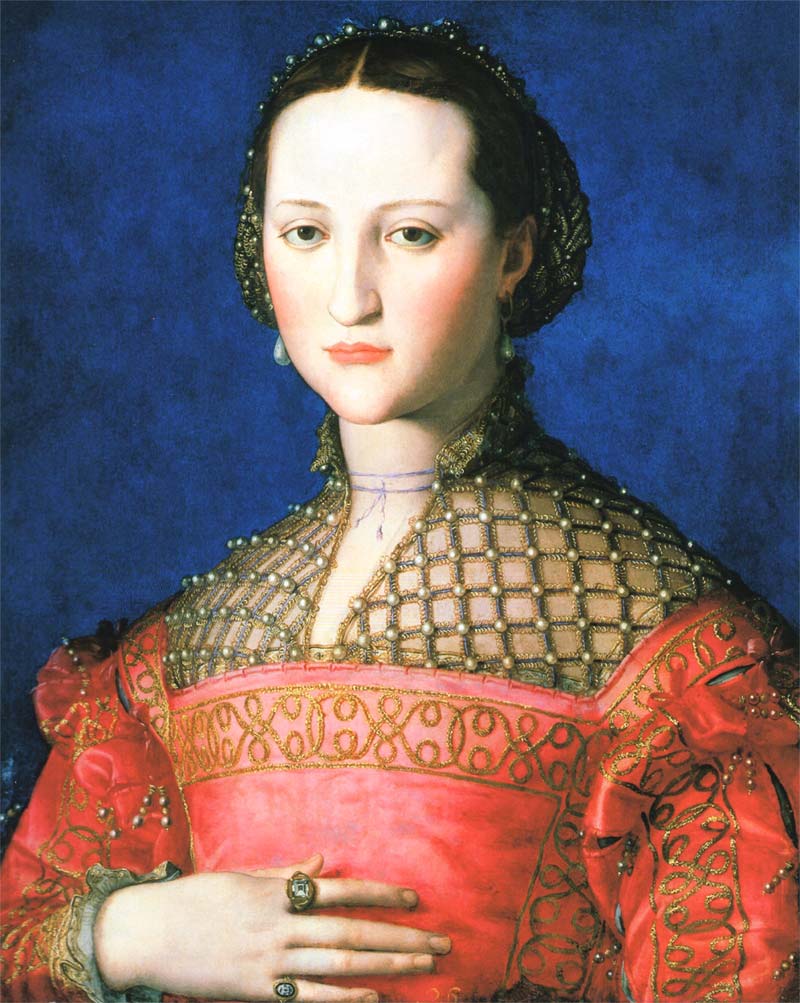
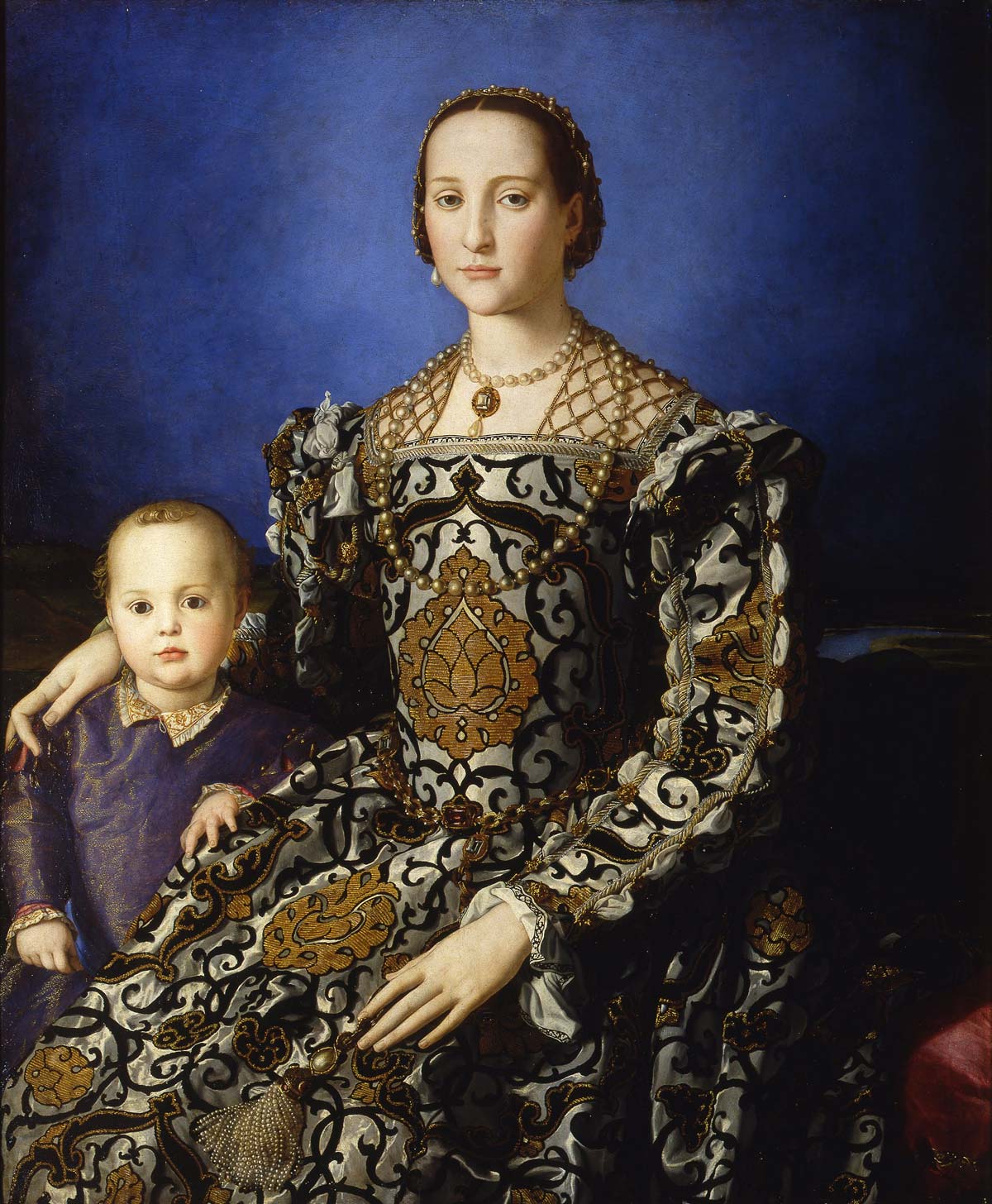
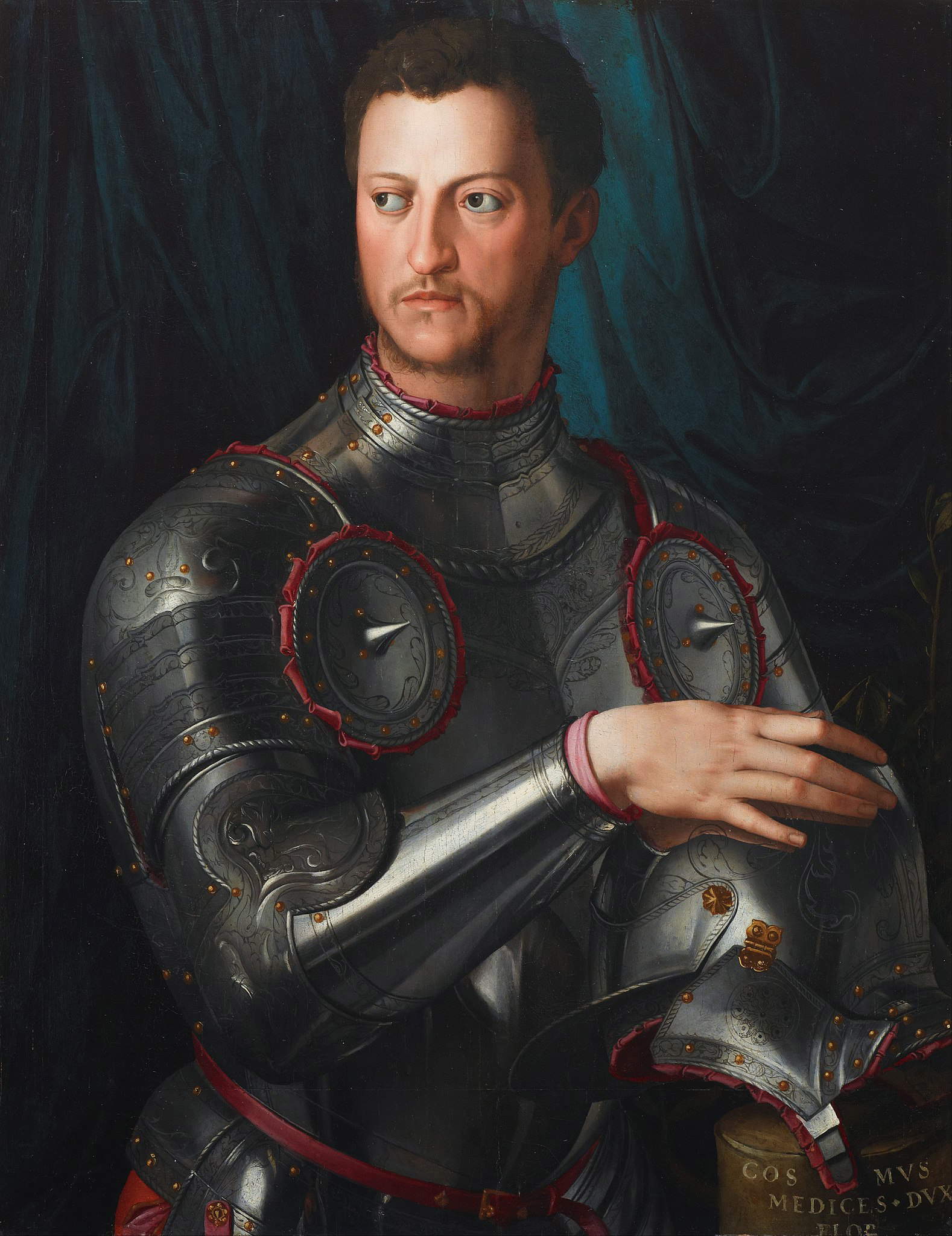
For herself, Eleonora chose instead a zimarra, a long robe, devoid of cuts at the waist, characterized by wide sleeves with bulges at shoulder height, of oriental origin (it was probably introduced in Europe from Spain) and at the time not yet widespread in Tuscany, where it arrived precisely with Eleonora, who, as is known, also knew how to establish fashions in clothing. Under the zimarra, Eleonora wears a sottana, not to be understood, however, in the contemporary sense of the term: at the time, the sottana was a luxurious velvet robe with satin appliqués that was worn under the surcoat (i.e., under the zimarra, in this case). Above the sottana, on the other hand, here is a ruff made of a gold net and pearls sewn over a white linen fabric, ideal for covering the skin.
The National Museum of the Royal Palace in Pisa preserves a “skirt with a tail” from around 1560 that is said to have belonged to Eleanor of Toledo, and is similar to the one the duchess wears in the painting. The work of the workshop of Agostino da Gubbio, one of the leading tailors of the time, as well as Eleonora’s tailor (his activity is documented from 1533 to 1566), the dress, in crimson red velvet, was part of the outfit for a wooden statue of the Virgin Annunciata that was in the church of San Matteo in Pisa. The family had a close relationship with the convent of San Matteo, near which the family resided. Eleanor, then, had a very close relationship with Pisa: it was here that the Medici’s winter residence was located (chosen by Cosimo because of the milder climate in the bad season than in Pisa), in what is now the Palazzo della Prefettura, and it was also in Pisa that the first wedding procession was organized for the couple when Eleanor landed in 1539 for the first time in Tuscany.
Restored in 2000, when it was restored to its original form, the gown is probably among the many petticoats Eleanor owned (red ones, the typical color of royalty, were particularly common, although satin ones were in greater numbers than velvet ones), but we are not certain that it belonged to the duchess herself: perhaps, scholar Roberta Orsi Landini has speculated, although similar to the dresses that belonged to Eleanor of Toledo (the skirt from the Royal Palace in fact differs in some details from the skirts that we know belonged to the duchess: for example, there is less use of gold), it may have been worn at the time by someone from the ducal “family,” thus one of the daughters, a maid or some woman from Eleanor of Toledo’s servants: in fact, Agostino da Gubbio made clothes not only for the duchess, but for the whole court. In any case, it is a luxury dress, made from cloth or paper patterns, and which ended up in the church of San Matteo as a probable ex voto. What’s more, it is a very important attestation of women’s fashion at the court of Cosimo I, which can still be seen on display at the Museo di Palazzo Reale near Eleonora’s portrait in the Tapestry Room.
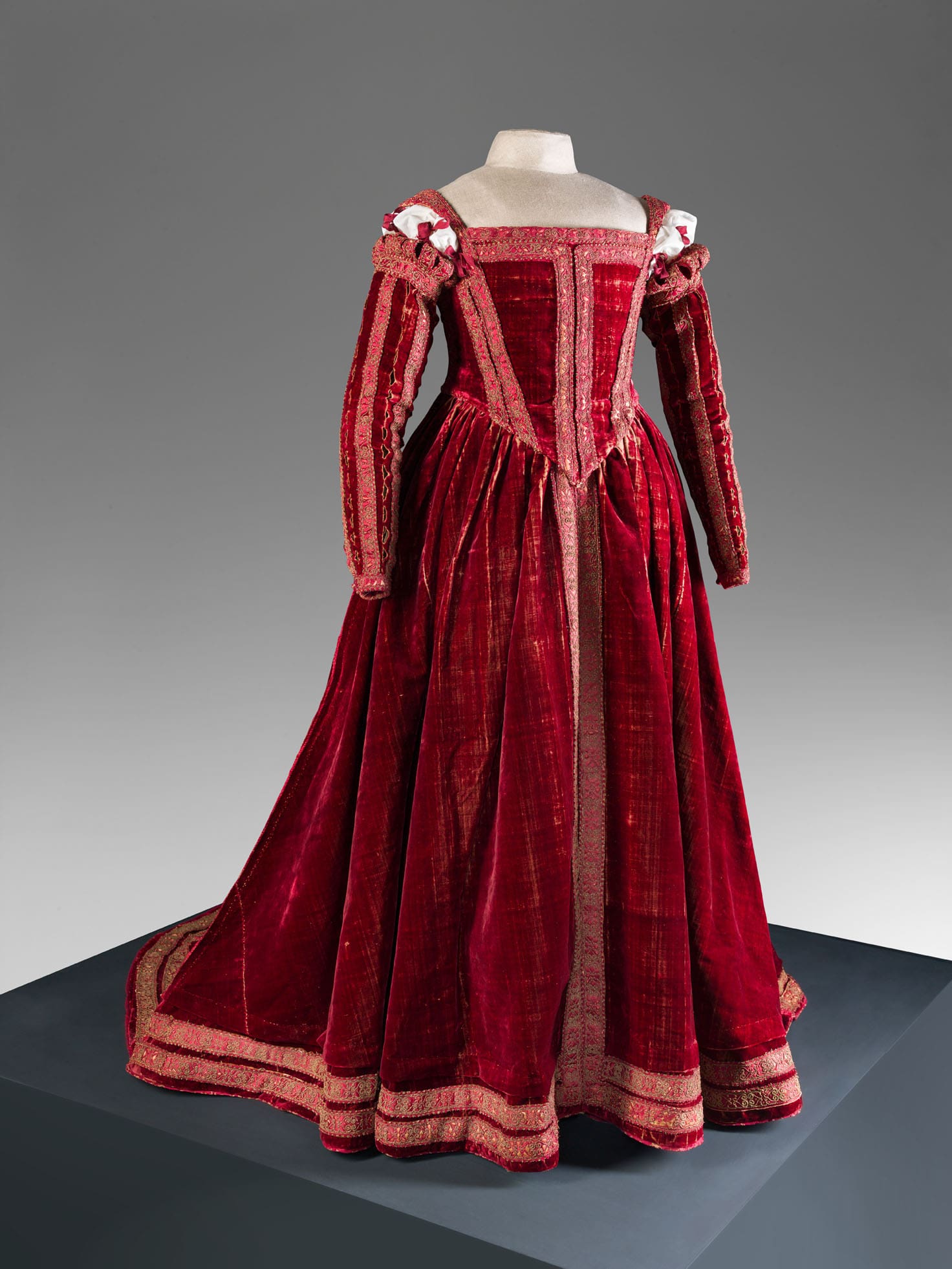
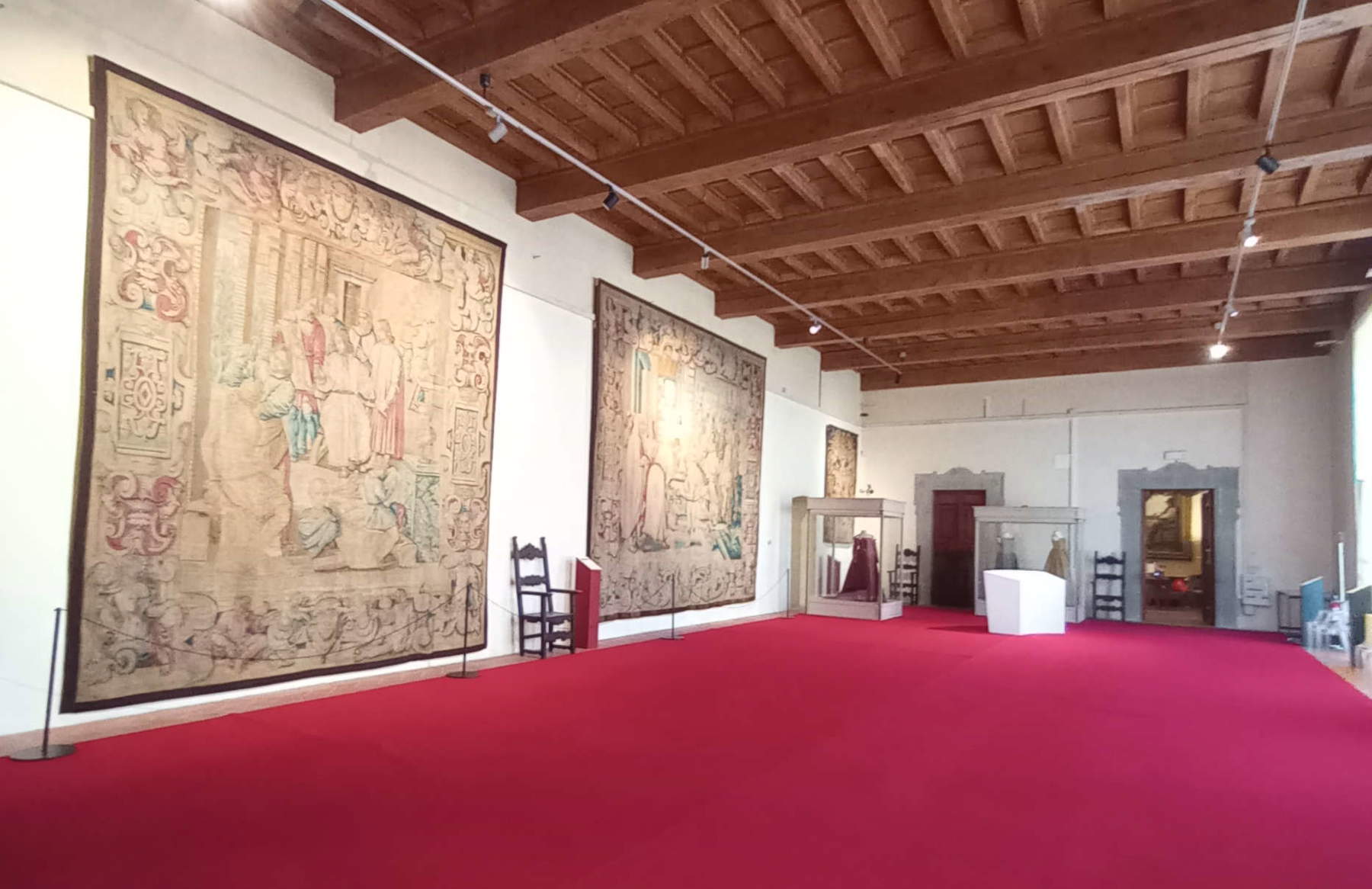
In the Pisa portrait, Orsi Landini noted, Eleonora and her son share the same dress scheme: “velvet for his habit and her petticoat, satin for his stuff and her zimarra, in crimson and ’pagonazzo’ respectively. For both, the decorations are in gold: chevrons for the boy, embroidery in vergola appliqué or gold braid in interlace design for Eleanor, the same or very similar for the two distinct garments that make up the men’s and women’s clothing, according to the established taste at court in those years.” The choice of the “pagonazzo” color , a crimson red, responds more to artistic necessity than to the need for realism, since the red of the real clothes was slightly different from what we observe in the painting, since the duchess preferred other shades at the time. Natural then to think that the red in the painting, which is brighter than that of the real dresses, must have had representative and symbolic functions.
Finally, how did the duchess manage not to offend the sensibilities of the Florentines by always exhibiting sumptuous robes, expensive jewelry and rich ornaments? If, indeed, at first the Florentines were wary of the duchess who had arrived from Spain, they soon began to appreciate Eleonora, and relations between the duchess and her subjects were always good. The point is that, despite appearances and despite the image of Eleanor of Toledo that has become fixed in our memories, the duchess, in her day-to-day life, led a relatively modest life partly so as not to tarnish her own image, not to undermine that idea of virtue that she wanted to convey to her subjects. Then as now, the construction of the image of a politician did not leave out any element, from behavior in public and private to official portraits.
Warning: the translation into English of the original Italian article was created using automatic tools. We undertake to review all articles, but we do not guarantee the total absence of inaccuracies in the translation due to the program. You can find the original by clicking on the ITA button. If you find any mistake,please contact us.





